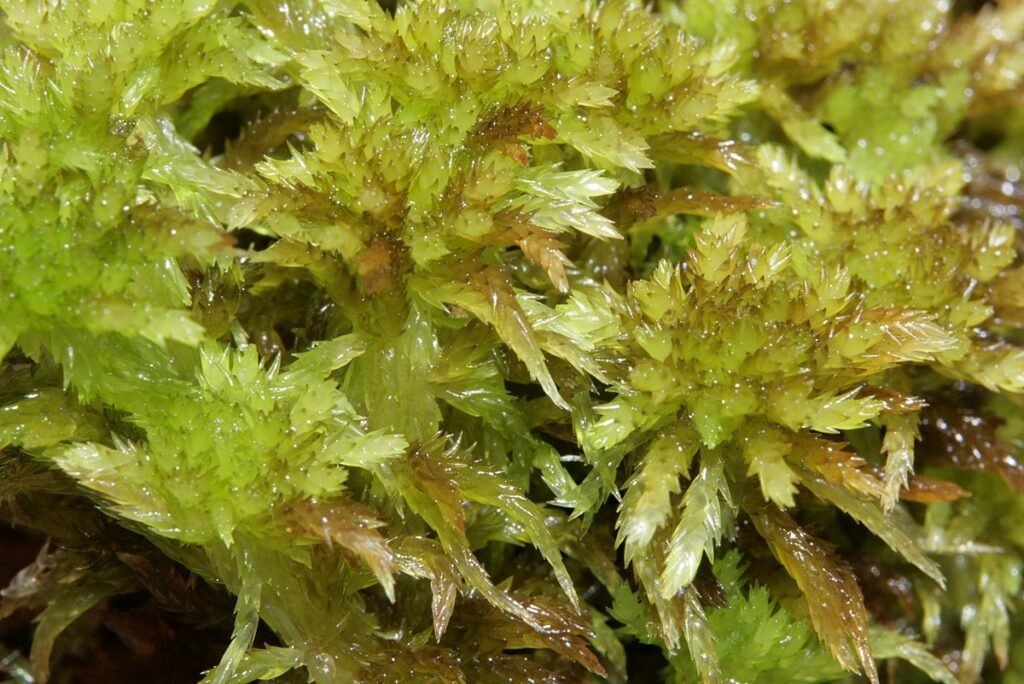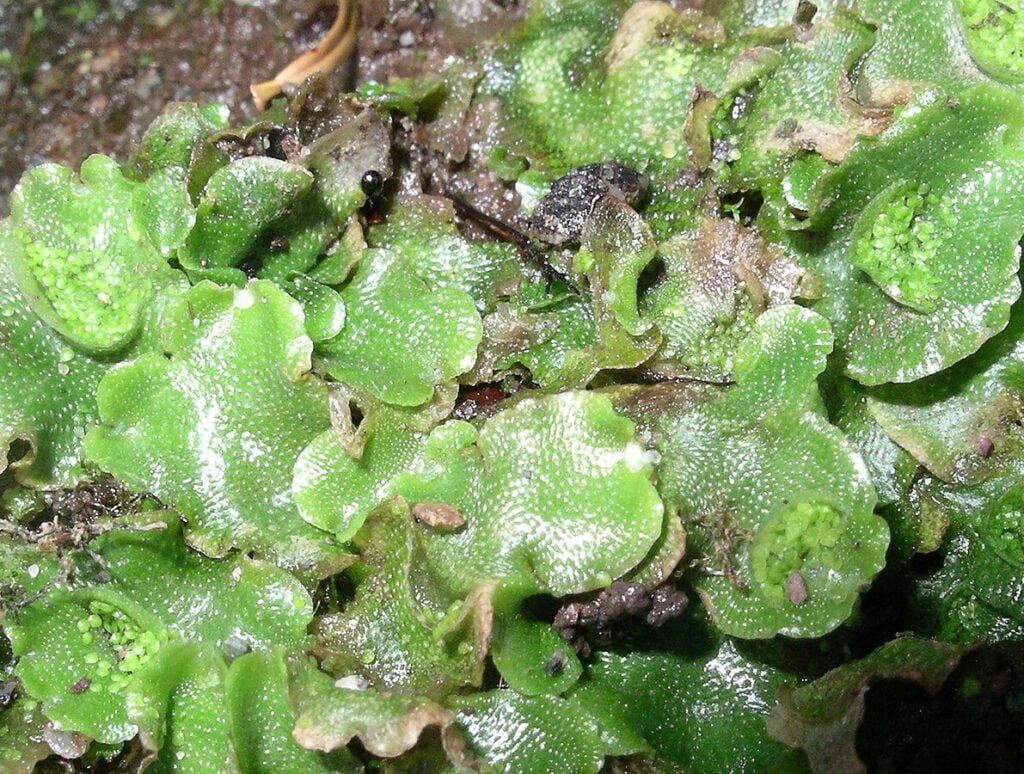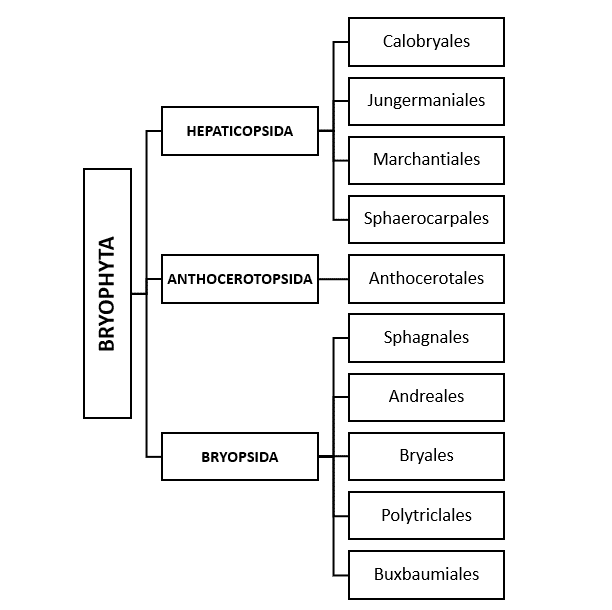Bryophytes are the diverse group of non-vascular plants which includes embryophytes like mosses, hornworts, and liverworts.
The term “bryophyte” encompasses mosses, hornworts, and liverworts, with “bryology” referring to their study. Despite distinct differences among these groups, their close relationship justifies using a single term for all three. Therefore, a moss, liverwort, and hornwort all fall under its category.
Like all living beings, bryophytes undergo hierarchical classification, with similar species grouped into genera, related genera into families, and so forth.
Mosses, display leaves that emerge from their stems. Many moss species feature spore capsules with solid stalks that grow from the leafy portion of the plant, while in other species, these capsules lack stalks.

Hornworts, lack a leafy structure. The primary part of the hornwort plant takes the form of a greenish, somewhat flat sheet, which can be either lobed or mildly wrinkled. This sheet-like configuration is referred to as a thallose growth pattern.
In hornworts, the capsules resemble thin, tapering “horns” or needles that extend from the thallose section. The provided image depicts a hornwort colony where a few premature capsules are emerging from the thallose base.

Liverworts, exhibit two growth forms, encompassing both thallose species and leafy species with leaves positioned on stems, much like mosses. The development of spore capsules varies among these species.
In the thallose liverwort like Riccia, the capsules are embedded within the thallose sheet and a couple of hollow spaces within this type of growth. These cavities contain spore capsules that have ruptured, releasing most of their spores.

In leafy liverworts and numerous thallose liverworts, the capsules are situated a top stalks.
Despite a handful of thallose liverwort species being prominent, leafy species of liverworts significantly outnumber their thallose counterparts.
Mosses and leafy liverworts exhibit relatively diminutive leaves, and occasionally, their stems can also be of limited length.
General Characteristics of Bryophytes
- The plants usually grow in moist and shady places. They are terrestrial but require presence of water to complete their life cycle.
- The plant body is gametophyte which is haploid and bears gametes.
- The plant body may be thallus like i.e. , not differentiated into true roots, stem and leaves or leafly shoots. The leafy shoots may be dorsiventral or erect, differentiated into stem like central axis and leaf -like appendages.
- The plant body is attached to the substratum by means of branched, multicelluar rhizoids resembling the roots. The plants are green and possess chloroplasts and are autotrophic. However, a few species are saprophytes.
- The vascular tissues (i.e., xylem & phloem) are completely absent.
- The gametophyte which bears gametes and occur as nutritionally independent phase in the life cycle.
- Sexual reproduction is always oogamous type.
- The gametes are produced in complex multicellular jacketed sex organs.
- The male reproductive organs are antheridia and female reproductive organs are archegonia.
- Water is essential for fertilization.
- The dipliod zygote occur as first cell of sporophyte generation.
- The spores, produced from sporogonium, are haploid, represent the first cells of gametophytic generation.
- The occurrence of distinct of alternation of generation in lifecycle.
Adaptations of Bryophytes to Land Habit
Bryophytes are first land plants. Evidences support that they are evolved from Algae. During the process of origin they developed to certain adaptations to land habit. These are;
- Development of compact plant body covered with epidermis.
- Development of organs for attachment and absorption of water e.g., rhizoids.
- Absorption of carbon dioxide from atmosphere for photosynthesis e.g., airpores.
- Protection of reproductive cells from drying and mechanical injury i.e., jacketed sex organs.
- Retention of zygote within the archegonium.
- Production of large number of thick-walled spores.
- Dissemination of spores by wind.
Bryophytes; Amphibians of Plant Kingdom
They are often referred to as the amphibians of the plant kingdom, share this nickname due to their reliance on water to complete their life cycle.
In the animal kingdom, the class Amphibia (from the Greek words “amphi” meaning both or two, and “bios” meaning life) encompasses vertebrates that display amphibious characteristics, capable of thriving both on land and in water.
Similarly, a majority of them are terrestrial in nature, yet they haven’t fully adapted to terrestrial conditions.
They face limitations in growth during dry periods and necessitate an ample water supply for their vegetative development. Water plays a vital role in the maturation of their reproductive organs and the fertilization process. Their life cycle remains incomplete without water.
Due to their intricate dependency on external water sources to fulfill their life cycle, Bryophytes, along with Pteridophytes, are categorized as the plant kingdom’s equivalent of amphibians.
Origin of Bryophytes
Bryophytes possess a tender and fragile nature, which has resulted in their absence from the fossil record. No fossilized bryophytes that predate modern forms have been identified.
Nevertheless, two differing perspectives exist regarding their origin. In one viewpoint, they are believed to have evolved from green Thallophyta, specifically algae. The other perspective proposes their lineage tracing back to pteridophytes. The prevailing sentiment among researchers leans toward their ancestry originating from algae.
- Algal origin of Bryophytes
- Pteridophytic origin of Bryophytes
Algal Origin of Bryophytes
The majority of bryologists have aligned with this perspective on the origins of bryophytes. Despite the absence of fossil evidence directly linking algae and bryophytes, numerous factors bolster this viewpoint.
- The essential requirement of water for fertilization, their amphibious characteristics, and the presence of ciliated antherozoids collectively reinforce the notion that bryophytes trace their lineage back to aquatic ancestors.
- Bower (1908) also supported this theory, asserting that the Archegoniatae, a group including bryophytes, evolved from aquatic forebears, specifically algae.
- They share several similarities with green algae, particularly Chlorophyceae.
- Fritsch (1916, 1945) has proposed that bryophytes were derived from the Chaetophorales group of green algae.
- However, there doesn’t appear to be a direct correspondence between bryophyte antheridia and archegonia and the corresponding structures in algae, such as antheridia and oogonia.
- Unlike algae, bryophyte eggs are encased within a protective cellular layer rather than being surrounded by a simple protective covering.
- According to several researchers, the sexual organs of bryophytes evolved from structures similar to those in algae.
- In this perspective, bryophyte antheridia and archegonia have origins in gametangia similar to those found in Ectocarpus. Ectocarpus, a member of the Phaeophyceae, possesses multi-celled gametangia, each of which gives rise to a gamete.
- As the transition from aquatic to terrestrial habitats occurred, the need to shield gametes from drying out led to the development of a protective layer from the outer cells of the gametangium. Consequently, the antheridium is believed to have evolved from these algal gametangia.
- For the origin of the archegonium from such a structure, it is suggested that after the formation of the protective wall, further changes resulted in the central development of an axial row of cells.
- According to this idea, the neck canal cells were initially female gametes that eventually lost their walls and cytoplasm.
- Smith (1938) notes that the reproductive cells of Schizomeris and antheridia of Chaetonema closely resemble the gametangia of Ectocarpus.
- Church (1919) contends that bryophytes originated from marine ancestors rather than freshwater ancestors.
This hypothesis faced limited acceptance due to the absence of substantiating evidence from paleobotany and geology. According to the prevailing viewpoint among most researchers, bryophytes originated from Chlorophyceae, a group commonly encountered in freshwater environments and occasionally in marine waters.
Pteridophytic Origin of Bryophytes
An alternative perspective proposes that bryophytes evolved from pteridophytes through a process of reduction. Although this viewpoint did not gain widespread endorsement, several researchers presented supporting evidence.
Numerous bryologists argued that bryophytes originated from pteridophytes through a process of reduction.
- Kashyap (1919) also endorsed this perspective due to the shared characteristics of the two groups. The observation of 20 similarities between the sporangia of certain Psilophytales members (such as Rhynia, Horneophyton, and Sporogonites) and the capsules of Anthocerotales, Sphagnum, and Andreaea lent support to this theory.
- Among the Psilophytales, the earliest pteridophytes featuring rootless, leafless, dichotomously branched sporophytes with terminal sporangia, exhibit resemblances to bryophytes, particularly those within the Anthocerotales group.
- These sporophytes are believed to have evolved through a gradual reduction process.
- Proskaeur (1960) speculates that if bryophytes have multiple origins, then at least Anthocerotales might have originated from Psilophytales, like Horneophyton.
Kashyap (1919) contends that “bryophytes represent a degenerate evolutionary line of pteridophytes or, more accurately, bryophytes are descendants of pteridophytes.”


